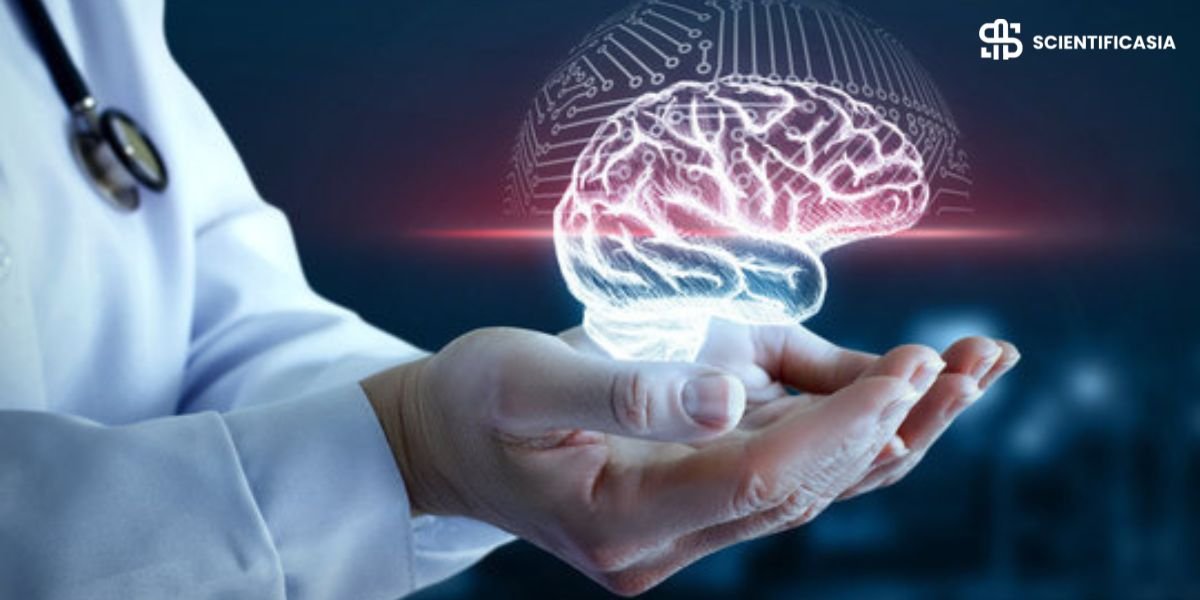What if everything you thought about your brain was just a little off? Neurological health is more than sharp thinking or a strong memory. It’s a tangled web of mysteries and functions.
Learning a few odd facts about your brain might shift how you see your own health.
Does your lifestyle quietly shape your neural networks? What tiny tweaks could boost your brain’s performance?
From strange abilities to quirky habits, the brain holds secrets that are both fascinating and essential.
The Brain: Marvel of Human Anatomy
The human brain is a marvel—complex, mysterious, and endlessly surprising. It packs billions of neurons into a small space, powering everything from memory to emotion.
Billions of Neurons, Infinite Possibilities
Your brain has roughly 86 billion neurons. That’s a wild number to picture. Each one might look simple, just sending out electrical signals.
But together, they create a storm of interactions. These connections drive creativity, learning, and even your split-second choices.
Neurons keep working behind the scenes, helping you remember a face or solve a riddle. Networks of these cells shape your personality and actions.
They’re not just cell bodies—they’re pure potential.
Synaptic Connections: The Real Power Grid
If neurons are the bricks, synapses are the glue holding everything together.
Trillions of these connections send neurotransmitters zipping from cell to cell.
It’s like a non-stop electric dance. Synaptic plasticity lets you learn and adapt.
Ever tried to master a skill? That’s your synapses rewiring with every attempt.
Neurotherapies like MeRT are built on this understanding, working to fix misfires that mess with mood or focus.
Uncharted Territories: The Unknown Frontier
Despite all we’ve learned, some brain regions remain a mystery. What do these shadowy areas actually do? No one’s totally sure.
Some folks think they might hold abilities we’ve never tapped into.
Tech like MRI is slowly peeling back the curtain.
Will we ever crack the code of consciousness or intelligence? Hard to say, but the chase continues.
Neuroplasticity: Rewiring Our Minds
Neuroplasticity means your brain can reshape itself—at any age. Your thoughts, habits, and environment actually change its wiring.
This flexibility changes how you think and learn.
How Experience Shapes Neural Pathways
Every experience marks your brain in some small way. Think of walking a path in thick woods—each trip makes it a bit clearer. Repeated behaviors strengthen certain circuits.
When you pick up a new hobby, your neurons form fresh connections.
This process, called synaptic plasticity, shows how daily life shapes your brain. Your routines matter more than you might think.
How you live today builds the brain you’ll use tomorrow.
Learning New Skills at Any Age
It’s never really too late to learn something new. Brains stay adaptable, no matter your age. The idea that we stop learning as we get older? That’s mostly a myth.
Adults who learn new things—like an instrument or language—build new brain pathways. These changes keep your mind sharp. Whether you’re 20 or 80, a new challenge keeps your brain lively.
Go ahead, pick up that guitar or try learning Spanish. Your brain will thank you.
The Resilience of Brain Recovery
Your brain’s flexibility isn’t just for learning—it helps you recover, too. After injury or stroke, undamaged areas can step up and take over lost functions.
This process, called functional reorganization, lets new pathways form to replace damaged ones. It’s not instant. Rehabilitation takes grit and time.
But many people regain abilities they thought were gone. Recovery isn’t guaranteed, but hope makes a difference.
Sleep’s Surprising Role in Brain Function
Sleep isn’t just downtime for your body.
It’s when your brain gets busy—consolidating memories, boosting creativity, and fending off cognitive issues.
Each sleep stage does something different for your brain.
REM Sleep and Memory Consolidation
During REM (Rapid Eye Movement) sleep, your brain gets to work on new memories. It’s like filing away the day’s info in a mental cabinet.
Learning a skill or cramming for a test? REM sleep helps lock it in. Your brain even connects emotional context to memories during this stage.
So if you practiced piano all day, REM phases make those lessons stick. Miss out on REM? You might wake up feeling like something’s missing.
How Naps Affect Creativity
Ever get stuck on a problem, nap for 20 minutes, and suddenly have the answer?
Your brain was busy the whole time.
Short naps—20 to 30 minutes—can jolt your creativity by letting your mind shuffle ideas around. During these naps, your brain can make unexpected connections.
Creative tasks often benefit from a quick rest.
If you’re struggling to think outside the box, maybe try a nap. Sometimes that’s all it takes.
The Dangers of Sleep Deprivation
Skipping sleep does more than make you groggy. It slows your brain, making it hard to focus or react quickly.
It’s like driving through fog—everything feels harder. Long-term sleep loss can mess with your mood and raise your risk for anxiety or depression.
Your body suffers too, since sleep helps with immunity, weight, and stress. Running on four hours is like trying to charge your phone to 10%. It’ll work, but not for long.
Good sleep isn’t just about feeling rested—it’s essential for a healthy brain.
Gut-Brain Axis: A Two-Way Conversation
Your gut and brain talk to each other more than most people realize.
This conversation involves your microbiome and even the production of neurotransmitters like serotonin.
Microbiome Influence on Mood
Your gut is home to trillions of bacteria—the microbiome. This ecosystem does more than digest food. It helps regulate your mood.
The microbes in your gut send signals to your brain, shaping how you feel. Ever get butterflies before a big event? That’s your gut-brain chat in action.
This link can even affect anxiety or depression. Probiotics in fermented foods might help balance things out.
It’s not a one-way street, though—stress and emotions can throw off your gut’s balance, too. Serotonin Production in the Gut
Did you know about 90% of your serotonin—the “happy hormone”—comes from your gut?
Serotonin is key for mood and digestion.
Your gut acts like a second brain, with its own nervous system. Amino acids like tryptophan, found in turkey and bananas, help your gut make serotonin.
Your mental health can impact how well your gut produces and uses this chemical.
It’s a constant back-and-forth, with each side influencing the other.
Neurodiversity: Embracing Unique Wiring
Neurodiversity celebrates neurological differences—like autism and ADHD—as natural, valuable variations.
It highlights the strengths in these unique wiring patterns and pushes for more support and understanding.
Autism and Exceptional Processing
Autism Spectrum Disorder (ASD) often comes with unique ways of processing information. People with autism can have intense focus and notice details others miss.
They might spot patterns faster than most. This ability makes some autistic folks stand out in math, science, or art.
Many have amazing memories, especially for things they love. Their deep thinking can spark extraordinary ideas or inventions. It’s important to nurture and value these strengths.
ADHD’s Unexpected Advantages
ADHD is usually linked with inattention or impulsivity, but it comes with upsides, too. People with ADHD can be wildly creative and think in fresh ways.
Their brains often leap outside the box, leading to inventive solutions. Hyperfocus is another trait—sometimes, they can zero in on a task so deeply they outpace others.
This intense focus can drive real achievements if channeled well.
The Mysteries of Left-Brain vs. Right-Brain
Ever been called “left-brained” or “right-brained”? It’s a catchy idea, but is it true?
Let’s dig into what really happens.
Creative Sparks and Logical Circuits
The old story says left brain equals logic, right brain equals creativity. But real life is messier.
Language often lives in the left hemisphere, but creativity isn’t stuck on the right. Both sides pitch in for creative and logical tasks.
Picture an artist at work—imagination and logic both play a part. These sides work together, not in isolation.
Debunking the Hemispheric Myth
The strong “left-brained” or “right-brained” label? Not really accurate. Some lateralization happens, but most tasks use both hemispheres.
Neuroimaging shows that even humor or decision-making lights up multiple areas. The brain works as a network, not a split system.
Instead of boxing yourself in, notice how both sides blend analytical and creative thinking.
That’s what lets you handle life’s twists and turns.
Unusual Brain Phenomena Explained
Brains do weird things sometimes. You might “hear” colors, feel a missing limb, or get déjà vu.
These oddities reveal just how wild the brain can be.
Synesthesia: Blending the Senses
Imagine if numbers had colors or music tasted sweet. That’s synesthesia. One sense triggers another—maybe the letter “A” looks red, or a sound tastes like chocolate.
Not everyone gets this, but those who do find it fascinating. Scientists believe synesthesia comes from extra connections between sensory brain regions.
Some think it boosts memory and creativity by layering associations.
Phantom Limb Sensations
Some people feel sensations in a limb that’s no longer there—phantom limb. The brain keeps sending signals to the missing part, causing itching, warmth, or pain.
It’s like the brain’s map of the body doesn’t update right away.
Mirror therapy can help by tricking the brain into seeing the limb, easing discomfort.
Déjà Vu and the Mind’s Time Machine
Ever walk into a place and feel like you’ve already been there? That’s déjà vu. It’s a weird, fleeting feeling.
Scientists think it happens when memory and perception get out of sync. Your brain grabs a snippet and labels it as familiar by mistake. Stress or tiredness might make this more likely.
Nutrition’s Surprising Impact on Neurological Health
What you eat shapes how your brain works.
Certain nutrients affect your focus and mental clarity.
Omega-3s and Cognitive Performance
You’ve probably heard about Omega-3s. These fatty acids—found in fish like salmon—help your brain work better.
They keep cell membranes healthy and support learning and memory. Studies link higher Omega-3 intake with better concentration and reasoning.
Thinking about supplements? Could be a good idea if you don’t eat much fish.
Still, always check with your doctor first.
Micronutrient Deficiency and Brain Fog
Ever get that foggy, unfocused feeling? It’s more than just annoying.; it often points to deficiencies in vital nutrients like vitamin B12 and iron.
These micronutrients are building blocks for neurotransmitter production and energy metabolism.
Without them, you might struggle with focus and processing information efficiently.
Sources like leafy greens, nuts, and fortified cereals help ward off these deficiencies.
Consistent, balanced meals support your mental clarity and cognitive health.
Keep an eye on your nutrient intake. Even subtle imbalances can affect how you think and feel.
Neuroprotection: Shielding the Brain Against Harm
Protecting your brain from potential threats isn’t just possible—it’s necessary.
From maintaining physical wellness to using nutritional strategies, there are multiple ways to safeguard your neurological health.
Physical Activity and Brain Longevity
Did you know regular physical activity isn’t just good for your body but your brain too? That’s right.
Exercise lifts your mood, sharpens your mind, and can even help your brain cells stick around longer.
Activities like aerobic exercises improve blood flow to the brain, bringing much-needed oxygen and nutrients.
This could lower risks linked to cognitive decline.
Ever heard how exercise increases BDNF? Brain-Derived Neurotrophic Factor, often called “fertilizer” for neurons, is crucial for growing and maintaining brain cells.
High levels are linked to better memory and cognitive function. It’s like tuning up your mental engine.
People who stay active daily generally face lower risks of neurodegenerative diseases like Alzheimer’s.
Antioxidants and Cellular Defense
Antioxidants are like the unsung heroes fighting for your brain’s well-being. They neutralize free radicals, those pesky molecules that can cause havoc in your cells and lead to diseases.
Foods rich in antioxidants—think blueberries, nuts, and green leafy vegetables—contribute to this defense.
Munch on these brain-boosting foods to build up cellular resilience.
Imagine antioxidants as your brain’s bodyguards. They halt oxidative stress, which is wear and tear on your cells.
Oxidative stress is linked to aging and neurodegenerative conditions.
Including antioxidants in your diet isn’t just “health talk.” They’re fighters setting up defenses, keeping your mind sharp and your neurons firing efficiently.
The Effects of Technology on Neural Health
Technology’s impact on brain health is notable, influencing concentration and cognitive restoration.
The overuse of screens and gadgets can distract attention and reduce focus.
In contrast, stepping away from digital devices allows for mental refreshment and recovery.
A digital detox can help reset your brain for healthier neural function.
Screen Time and Concentration
You’re probably familiar with the buzz of notifications and the lure of endless scrolling. Excessive screen time can lead to a noticeable dip in your ability to focus.
This constant distraction pulls your brain away from longer, deeper thinking. Frequent interruptions train your brain for short bursts of attention instead of sustained focus.
Infants and teenagers are especially sensitive, as their developing brains adapt quickly to stimuli. Multitasking often becomes the norm, making it tough for your brain to settle deeply into one task.
This shift can stunt your ability to process complex information. Try returning to activities that engage different parts of your brain, like reading a book or taking a walk.
These can help rebuild focus and concentration, giving your neural pathways a much-needed break.
Digital Detox for Cognitive Renewal
Have you thought about stepping back from your devices every now and then? A digital detox gives your overloaded mind a chance to breathe.
Imagine weekends without screens or setting up tech-free zones at home. This isn’t just withdrawal but real rejuvenation. The absence of screens lets your brain recover from the constant barrage of information.
Creativity and attentiveness may blossom as your brain finds its natural rhythm again. Overnight recharge isn’t just for your phone.
A night with fewer electronic distractions helps you sleep better, boosting cognitive functions the next day. Try small changes, like no screens at the dinner table.
These little steps can lead to real improvements, shaping a healthier relationship with your technology.
Unlocking Future Frontiers in Neurology
Exploring the future of neurology means diving into revolutionary technologies that could change how we understand and treat neurological conditions.
Two big advancements in this field are Brain-Computer Interfaces (BCIs) and Stem Cell Research and Regeneration.
Brain-Computer Interfaces
Imagine controlling a computer with your mind. That’s what Brain-Computer Interfaces (BCIs) aim to achieve. These systems create a direct line of communication between the brain and external devices.
While still developing, they hold the promise of restoring movement for those with paralysis or enhancing cognitive functions.
BCIs work by capturing brain signals using electrodes, then converting them into commands that operate devices. This could mean a future where you type without a keyboard or control a wheelchair with just your thoughts.
There are still hurdles like signal accuracy and the need for invasive procedures in some cases. But researchers keep making progress.
They’re working on improving non-invasive techniques, reducing risks, and making the experience better for users.
Stem Cell Research and Regeneration
Stem cell research offers a hopeful look into the potential regeneration of damaged brain tissue.
These cells can develop into various types of brain cells, giving hope for treating conditions like Parkinson’s, Alzheimer’s, or traumatic brain injuries.
Researchers are investigating how to guide stem cell growth to replace damaged neurons and improve brain function.
This approach could lead to breakthroughs in neurodegenerative diseases, where current treatments only manage symptoms.
Forward strides involve improving the integration of new cells into existing brain networks—a complex challenge that needs precise techniques.
Clinical trials are expanding, bringing this revolutionary idea closer to practical use.












